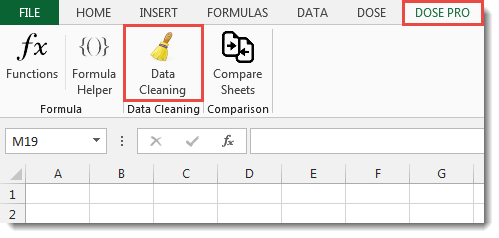Currently Empty: $0.00

Introduction
In today’s data-driven world, accurate and reliable information is crucial for making informed decisions. However, raw data often comes with inconsistencies, errors, and duplicates, which can hinder analysis and lead to incorrect conclusions. That’s where the power of Excel comes in. With its versatile functionalities, Excel can help you clean and transform your data, ensuring its quality and integrity. In this comprehensive guide, we will walk you through the process of cleaning data in Excel, enabling you to extract valuable insights from your datasets with confidence.
Table of Contents
Table of Content
- Understanding the Importance of Clean Data
- Preparing Your Data for Cleaning
- Removing Duplicates
- Handling Inconsistent Data
- Dealing with Missing Values
- Correcting Errors in Data
- Formatting and Standardizing Data
- Splitting and Combining Columns
- Extracting and Transforming Data
- Advanced Techniques for Data Cleaning
- Conclusion
- FAQs
Understanding the Importance of Clean Data
Before we delve into the intricacies of cleaning data in Excel, it’s essential to understand why data cleanliness matters. Clean data ensures accuracy and consistency, leading to reliable analysis and decision-making. By removing duplicates, errors, and inconsistencies, you eliminate potential biases and gain a clear view of the underlying patterns and trends.
Preparing Your Data for Cleaning
Before you start cleaning your data, it’s crucial to prepare it properly. Begin by making a backup of your dataset to avoid irreversible changes. Then, open Excel and import the dataset you want to clean. Familiarize yourself with the structure and layout of the data, identifying any potential issues or anomalies.
Removing Duplicates
Duplicates can skew your analysis and distort the results. To remove duplicates in Excel, use the built-in “Remove Duplicates” feature. Select the range of data you want to clean, navigate to the “Data” tab, and click on “Remove Duplicates.” Excel will prompt you to choose the columns to check for duplicates, and it will remove any matching entries, leaving only unique values behind.
Handling Inconsistent Data
Inconsistent data, such as variations in spelling or capitalization, can pose challenges during analysis. Excel offers several functions to tackle this issue. For instance, you can use the “LOWER” or “UPPER” functions to convert text to lowercase or uppercase, respectively. Additionally, the “PROPER” function capitalizes the first letter of each word in a text string, ensuring consistency.
Dealing with Missing Values
Missing values are common in datasets and can affect your analysis. Excel provides different methods to handle missing values, such as deleting rows or columns with missing values, replacing them with an average or median value, or interpolating missing values based on neighboring data points. Choose the method that aligns with your data and analysis objectives.
Correcting Errors in Data
Errors in data can lead to misleading results, so it’s crucial to correct them. Excel offers various functions and tools to identify and rectify errors. The “IFERROR” function allows you to replace errors with a specific value or perform an alternative calculation. Additionally, the “Find and Replace” feature helps you locate specific errors or values and replace them throughout the dataset.
Formatting and Standardizing Data
Inconsistent formatting can make data cleaning challenging. Excel’s formatting tools enable you to standardize data by adjusting font styles, cell alignment, and number formats. You can also use conditional formatting to highlight specific patterns or values, making it easier to spot discrepancies or outliers.
Splitting and Combining Columns
Sometimes, you may need to split a column into multiple columns or combine multiple columns into one. Excel’s text functions, such as “LEFT,” “RIGHT,” “MID,” and “CONCATENATE,” can help you achieve this. For example, you can split a full name column into separate first and last name columns or combine a date and time column into a single datetime column.
Extracting and Transforming Data
Excel provides powerful tools for extracting and transforming data. Functions like “VLOOKUP,” “INDEX,” and “MATCH” enable you to extract specific information from large datasets based on specified criteria. Additionally, you can use formulas and functions to calculate new values, create derived variables, or transform data into a different format, facilitating further analysis.
Advanced Techniques for Data Cleaning
Once you’re comfortable with the basics of data cleaning in Excel, you can explore advanced techniques to enhance your analysis. These include using pivot tables to summarize and analyze data, employing conditional formulas and logical operators for complex data transformations, and leveraging macros to automate repetitive cleaning tasks.
Conclusion
Cleaning data in Excel is a fundamental step in ensuring data quality and accuracy. By removing duplicates, handling inconsistent data, correcting errors, and formatting and standardizing your datasets, you can unleash the true potential of your data for analysis and decision-making. Excel’s powerful features and functions make the data cleaning process efficient and effective, enabling you to extract valuable insights with ease.
FAQs
Q: Can I clean large datasets in Excel?
A: Yes, Excel can handle large datasets for data cleaning. However, for extremely large datasets, you might experience performance issues. In such cases, consider using specialized tools or programming languages designed for big data analysis.
Q: Is it necessary to clean data before analysis?
A: Yes, cleaning data before analysis is essential to ensure accurate and reliable results. Unclean data can lead to biased conclusions and erroneous insights.
Q: Are there any shortcuts or keyboard commands for data cleaning in Excel? A: Yes, Excel offers numerous shortcuts and keyboard commands to expedite the data cleaning process. Familiarize yourself with commonly used shortcuts to improve your efficiency and productivity.
Q: Can I automate data cleaning tasks in Excel?
A: Yes, Excel allows you to automate repetitive data cleaning tasks using macros. Macros enable you to record a series of actions and replay them whenever needed, saving time and effort.
Q: Where can I learn more about data cleaning and Excel?
A: For further reading on data cleaning and advanced Excel techniques, you can visit the following authoritative sources:

